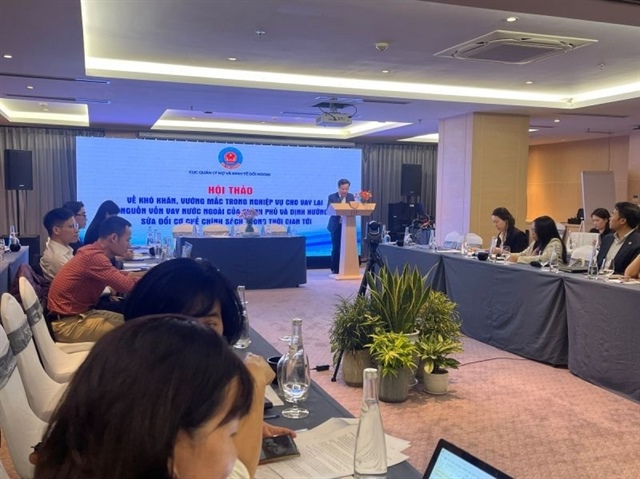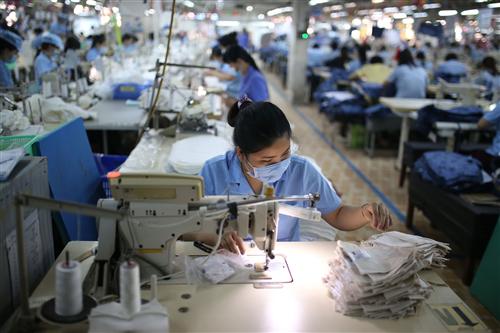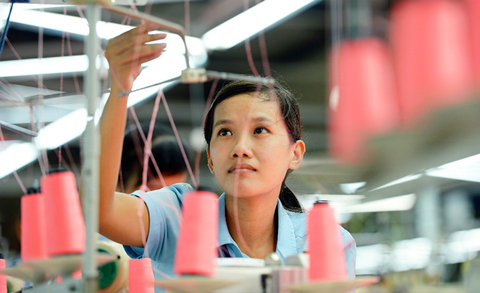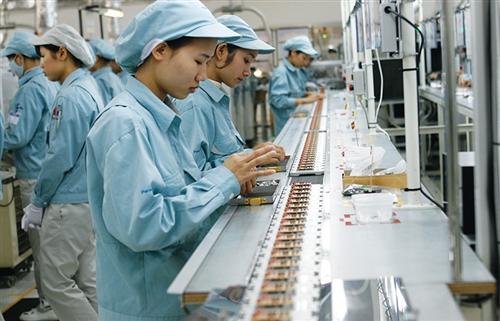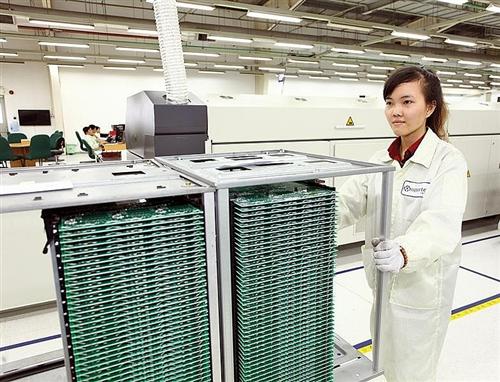Reality check for US in trade tug of war
Reality check for US in trade tug of war
News of a Taiwanese-based semiconductor chip facility set to be built in Arizona has placed focus on US attempts to entice major American corporations to return home or persuade foreign groups to set up shop anew. But it remains to be seen if the tangled complexities of cross-border trade pacts, the coronavirus pandemic, and the US-China trade dispute will actually lead to companies ditching Asian nations.
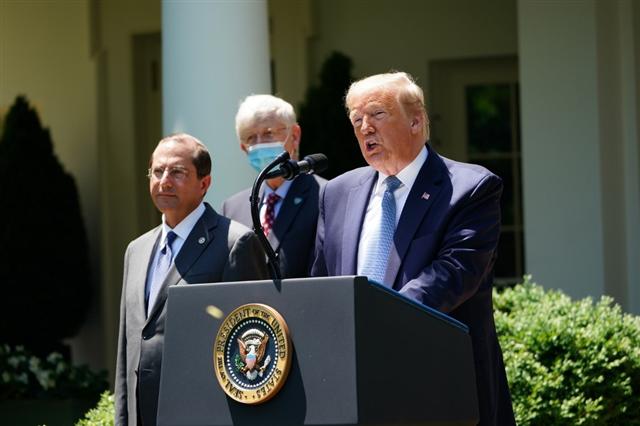
US President Donald Trump speaks on vaccine development on May 15, 2020, in the Rose Garden of the White House in Washington, DC. MANDEL NGAN / AFP
|
In an interview at the start of the year, US Commerce Secretary Wilbur Ross predicted that the oncoming coronavirus pandemic would encourage more companies to shrink supply chains and return jobs to the United States, a notion to which President Donald Trump himself agreed in a White House briefing a couple of months later.
Meanwhile, US Trade Representative Robert Lighthizer warned that the only way for companies to ensure secure access to the US market was to relocate production to the US. As businesses protested that Trump’s trade policies created uncertainty, his response was simple: if they want certainty, bring the plants back to America; if they want the benefits of being a US company and the protection of the country’s legal system, then bring back the jobs.
Some of those potential jobs were unveiled on May 15 when Taiwan Semiconductor Manufacturing Co. (TSMC), the world’s largest contract chipmaker, announced it will build a $12 billion plant in Arizona, scheduled to open in four years. It is aiming for the facility to employ around 1,600 workers and indirectly create thousands of additional jobs.
TSMC is one of only three manufacturers in the world that produce the most advanced computing chips, sitting alongside South Korea-based Samsung and US group Intel. China’s largest domestic chipmaker, Semiconductor Manufacturing International Corporation, cannot produce anything on the same scale. As a result, TSMC is positioned at the centre of US-Chinese competition for technology dominance, with its largest customers including both Apple and Huawei.
The plant, however, will do little to influence US reliance on Asian-based manufacturing. It will be set up to produce 20,000 wafers a month, only a small fraction of the 12 million that the company made last year alone. By the time 2024 rolls around, the five-nanometer chips it produces will no longer be the most cutting-edge items on the market.
Given the additional time and finances it would take to convert the plant to handling the latest technology, the US would still need to maintain its chip supply from overseas plants. In other words, say industry onlookers, the plant will do nothing to release the US-China supply chains from each other.
“It’s probably too small to really have any huge impact on the global picture,” said Neil Thomas, a senior research associate at the think tank MacroPolo, who also studies US-China relations and the semiconductor supply chain.
A tough task
On the same day as the TSMC news, it was announced that Foxconn’s profits collapsed 90 per cent due to both the coronavirus crisis and falling smartphone shipments. Foxconn, a Taiwanese hardware assembly company and key Apple supplier with a presence in Vietnam, has experienced a see-saw period during the US-China trade conflict.
Up to 2019 it even attempted to build a $10 billion manufacturing facility in Wisconsin state, to Trump’s delight, only to finally pull the plug on that dream last year after a slew of setbacks.
The commotion highlighted the problems of returning back to the States. Foxconn was to build in what was “essentially the middle of nowhere”, without the required strong ecosystem of suppliers and sub-suppliers for making an efficient major factory, as can be found in Southeast Asia.
While there are huge manufacturing ecosystems in the US – from cars in Detroit and planes in Washington, to advanced medical devices across several hubs – consumer electronics is one area that has mostly been lost to the likes of Singapore, South Korea, Vietnam, and China.
Danny Crichton, writing for TechCrunch said, “What is clear today is that the world of semiconductors, internet infrastructure, and tech ties that have bound the US and China together for decades are frayed and almost gone. It’s a new era in supply chains and trade, and an open world for new approaches to these huge existing industries.”
There are other, more obvious issues in this regard, with clear reasons why tech giants such as IBM, Microsoft, and Intel have outsourced software development to locations such as Vietnam.
“The price of services is probably one of the most significant factors. The product development cost in Vietnam is 90 per cent less than in the US,” said Bruce Pham writing for CustomerThink, a global online community of business leaders. “Compared to other outsourcing software development countries, Vietnam is still an attractive option in terms of cost reduction.”
Pham added that there are a lot of highly-skilled and experienced software engineers that offer their services for affordable prices. “Offshore outsourcing software development has become a new driving force for the Vietnamese economy,” Pham continued. “That’s probably why the government actively supports technological growth and promotes its economy for foreign investment.”
Back at the White House, economic adviser Larry Kudlow last month said one particular policy that might lure US companies to move back from Asia could be immediate expensing, involving the immediate deduction of the full cost of a long-term investment in the year it is made. “There are a lot of things we can do,” Kudlow told Fox Business News. “I would say 100 per cent immediate expensing across the board in terms of plants, equipment, intellectual property structures, and renovations. If we had this, we would literally pay the moving costs of American companies from China back to the US.”
However, experts said simply paying relocation fees was “a desperate and fatuous proposal” to shore up the US economy amid a deteriorating COVID-19 situation. They also noted that profit-driven US companies will not easily give up the world’s largest market for a one-time payment.
Related analysis from Bank of America Securities estimated that for the “most likely” scenario in which Apple moved 10 per cent of its iPhone assembly back to the US, the average selling price of the iPhone would rise 9 per cent. “The only factor that could drive US firms back is that operating in the US would be more profitable than in China, which is obviously not the case,” Hu Qimu, senior fellow at Sinosteel Economic Research Institute, told The Global Times.
Tangled trade webs
It is also possible that the US may issue more aggressive policies to force some industries that are conducive to its national security to return, but as of this month President Trump has yet to offer anything tangible. He said that instead of giving incentives to American companies to bring manufacturing back, he would instead simply tax them for moving anywhere other than the US.
In the most recent move in regards to possible cross-border trade and investment, Trump’s administration said that the US-Mexico-Canada Agreement (USMCA) will take effect on July 1.
The timeframe, however, is opposed by many North American business leaders who want to delay implementation of the deal because of the financial difficulties arising from the global health emergency. “Now is not the time to implement a trade agreement that contains so many important and meaningful changes that will impact certain industries in a significant financial manner,” the Commercial Customs Operations Advisory Committee noted.
Despite the opposition Trump is undeterred, viewing completion of the USMCA as a major victory to take into his re-election campaign. But business sources have said that the replacement deal for the North American Free Trade Agreement (NAFTA) will not have a major impact on the US economy, given that the original deal eliminated most tariffs on goods traded between the three countries decades ago.
In the last 12 years, the US Congress has approved only the Trans-Pacific Partnership of 2016, from which Trump withdrew the following year, and the USMCA, which is not a free trade agreement in the traditional sense.
An International Monetary Fund analysis of the agreement assessed that, on balance, the USMCA actually restricts North American trade as compared with the NAFTA because of its protectionist rules about components of North American automobiles and apparel.
For countries including Vietnam, the puzzles surrounding the trade deals, the ongoing pandemic, and the fact that a new US administration could be in place next year means it is nowhere near time to give up on winning the race to lure the brightest and best in business to manufacture and produce tomorrow’s most sought-after products.




